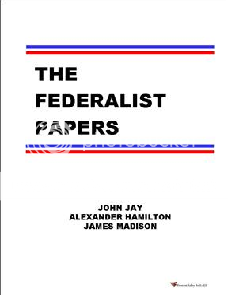RealWorldGraduation_Question_4 <– PDF
Article I, Section 2 of the U. S. Constitution originally contained the following provision:
“Representatives and direct Taxes shall be apportioned among the several States which may be included within this union, according to their respective Numbers, which shall be determined by adding to the whole number of free persons, including those bound to Service for a Term of Years, and excluding Indians not taxed, three-fifths of all other persons.”
In this passage, “representatives” refers to the number of seats in House of Representatives in Congress, “Numbers” refers to population, “several States” refers to any State that ratifies the Constitution, “those bound to service” refers to indentured servants (those who had committed to a term of voluntary servitude in compensation for repayment of the voyage to America fronted by others), “Indians not taxed” refers to Indians on reservations, “other persons” refers to slaves, and “free persons” refers to anyone not in the “other person” group, i.e. not slaves.
This passage can therefore be clarified as follows: “Representatives and direct Taxes shall be apportioned among the States according to their respective population, which shall be determined as the sum of the number of a) all free persons, b) indentured servants, and c) three-fifths of slaves; specifically excluding Indians on reservations.” In other words, representation in Congress was apportioned to the full population of all people in the state not on reservations, except for slaves, whose apportionment was at a fraction of only 60%. This is known as the “three-fifths” rule. This three-fifths provision was superseded by the 14th Amendment, which was ratified 9 Jul 1868.
Why did the Founding Fathers insert the three-fifths clause regarding slaves?
- a) Most of the Founding Fathers were slave owners who had contempt for black people, and reduced the value of black people to 60% of a white person because it was a long-held tradition.
- b) Most of the Founding Fathers were slave owners who had contempt for black people, and reduced the value of a black person to 60% of a white person in an attempt to deprive the slaves of their fair share of welfare payments.
- c) Even the Founding Fathers who did not own slaves were racist, and reduced the apportionment of slaves to 60% of a white person to suppress the political influence of the black slaves in the Southern states.
- d) The members of the Democratic Party insisted on this provision before they would allow a ratification vote in the Southern states.
- e) Each of the Founding Fathers had different motives, but these motives were generally a combination of a), b), and c).
(The answer shown on p. 2 of the PDF.)



